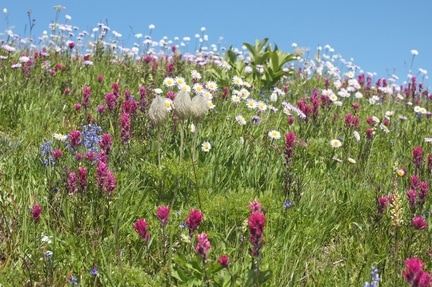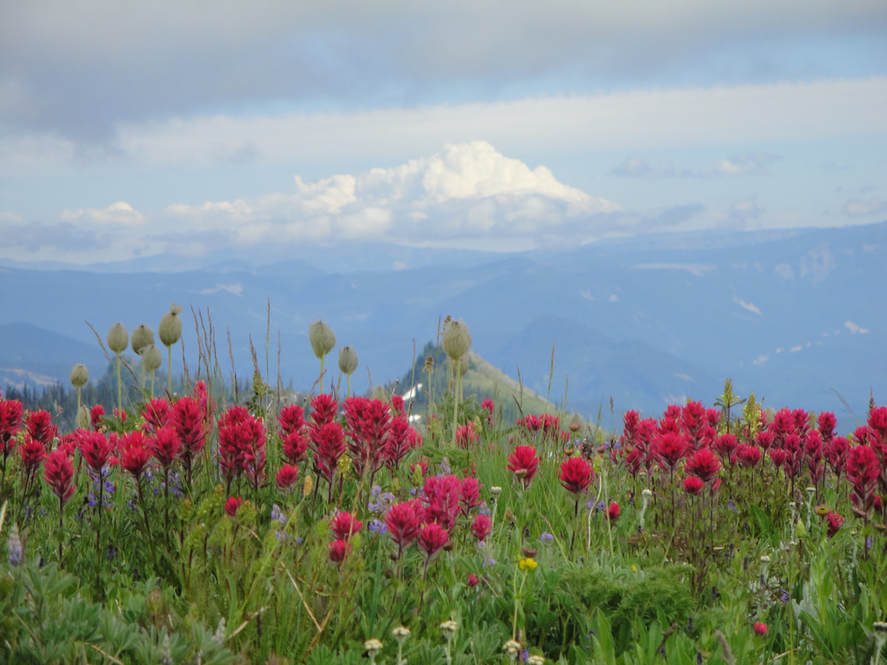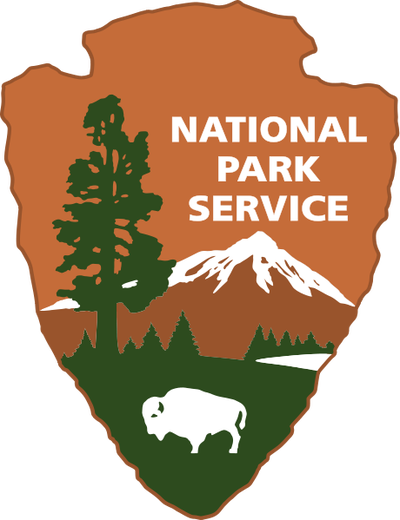Current Trail Conditions
As of Wednesday, July 17th:
The Glacier Basin Trail is snow free for almost the whole trail with a small, easily navigated patch within a quarter mile to the basin. ALL 17 Plot markers have been deployed.
The Reflection Lakes Trail is completely snow free to Faraway Rock. Patchier snow exists after Plot 8 with a larger patch near the Skyline Trail junction. ALL 11 Plot markers have been deployed.
Please visit MeadoWatch Hike Info for more information.
The Glacier Basin Trail is snow free for almost the whole trail with a small, easily navigated patch within a quarter mile to the basin. ALL 17 Plot markers have been deployed.
The Reflection Lakes Trail is completely snow free to Faraway Rock. Patchier snow exists after Plot 8 with a larger patch near the Skyline Trail junction. ALL 11 Plot markers have been deployed.
Please visit MeadoWatch Hike Info for more information.
2024 Orientation Updates
In-person orientation registration is now closed, but online orientation remains open for returning volunteers!
Be sure to join our email listserv for important season updates!
Timed Entry Exemption: In 2024, most visitors to Mount Rainier National Park will require a timed entry ticket.
If you are a MeadoWatch volunteer, you will not require a reservation for park entry this summer.
Be sure to join our email listserv for important season updates!
Timed Entry Exemption: In 2024, most visitors to Mount Rainier National Park will require a timed entry ticket.
If you are a MeadoWatch volunteer, you will not require a reservation for park entry this summer.
 Curious about the species in this photo or the photo above? Check out our Wildflower Photo page to learn all the MeadoWatch focal wildflower species!
Curious about the species in this photo or the photo above? Check out our Wildflower Photo page to learn all the MeadoWatch focal wildflower species!
At MeadoWatch, our mission is to engage Mt. Rainier National Park visitors in scientific research to understand how climate change will influence the timing of flowering and seed production in the iconic high mountain meadows pictured above.
MeadoWatch uses a Community Science approach, and volunteers are essential to the success of our program. Every summer, participants hit the trails of Mt. Rainier to record wildflower phenology (the timing of flowering, fruiting and seed production) of some of the most beautiful alpine wildflowers in the world. We use this information to understand which climatic factors trigger flowering and seed production, and how climate change may alter the the timing of seed production. Ultimately, this information can be used to aid resource managers at Mt. Rainier National Park in making conservation and management decisions.
If you are interested in becoming part of MeadoWatch, visit our Get Involved and Volunteer Resources pages for details on opportunities. If you have questions, please drop us a line ([email protected]).
MeadoWatch is Community Science project run out of the Hille Ris Lambers Lab and the Brosi Lab at the Department of Biology at the University of Washington and we work collaboratively with Mt. Rainier National Park.
We look forward to seeing you on the trail!
~Your MeadoWatch Team
MeadoWatch uses a Community Science approach, and volunteers are essential to the success of our program. Every summer, participants hit the trails of Mt. Rainier to record wildflower phenology (the timing of flowering, fruiting and seed production) of some of the most beautiful alpine wildflowers in the world. We use this information to understand which climatic factors trigger flowering and seed production, and how climate change may alter the the timing of seed production. Ultimately, this information can be used to aid resource managers at Mt. Rainier National Park in making conservation and management decisions.
If you are interested in becoming part of MeadoWatch, visit our Get Involved and Volunteer Resources pages for details on opportunities. If you have questions, please drop us a line ([email protected]).
MeadoWatch is Community Science project run out of the Hille Ris Lambers Lab and the Brosi Lab at the Department of Biology at the University of Washington and we work collaboratively with Mt. Rainier National Park.
We look forward to seeing you on the trail!
~Your MeadoWatch Team


